Blue Sharks-BTS
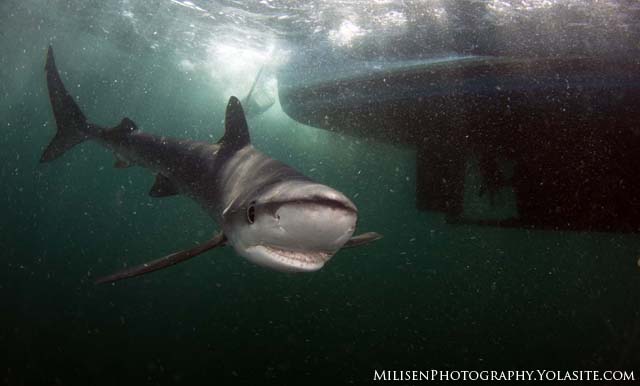
I have been long overdue for a trip home, so when my good friend Megan Cook (Our World Underwater scholar) sent me a chummy Facebook invite rubbing in her intent to swim with blue sharks from Rhode Island, how could I refuse?
Flash forward ten-ish days and there I stood with Megan and our mutual accomplice Jim Moriarty on the dock at Snug Harbor about to head out with 333 Productions on an excursion to photograph blue sharks. The day started at 6 in the morning with a whole stack of waivers giving the operators expressed permission to feed us to pelagic animals. The wait was excruciating. We waited at the dock for the last of the party to show up. Then we waited for the hour-long transit out. Then we waited another two hours bobbing about in the waves for the chum slick to attract a few suitable customers. I figured once we saw our first blue shark that the pool was open, but then we had to wait for the animals to get comfortable with the boat. It wasn’t until around 10:30 that we started gearing up.
Blue sharks have fascinated me from when I first watched one “bite” Valerie Taylor’s shielded arm in the documentary Blue Water White Death. Their comically long snouts and winding bodies made them one of the first sharks I could identify. I have since never been able to get a clear account on what they are like to swim with. Some divers claim that they can be “bitey” while other experienced professionals describe them as puppy-dogs. It would be two decades since watching BWWD before I would get to see one for myself.
When the first shark showed up, I ran to watch at boatside while everybody else ran for their cameras. The seven-foot shark came up after the bait like a flash, its strikingly iridescent blue back glistening under the water’s surface. It came in fast and hard and was gone before anyone came back with his or her camera. After watching the first animal, I wasn’t sure I wanted to climb into water with maybe 30 feet of visibility and these things swimming in out of nowhere. Of course, I hadn’t traveled 15 hours through six time zones to get cold feet at the last moment. In fact, after watching the sharks calm down over the next half hour, I was the first one in the water.
If the sharks were striking on board the boat, they were stunning underwater. It wasn’t long before two more animals appeared up and the show really got going. They would follow the bait in to the boatside where the snorkelers waited with cameras poised. The animals would then stick their nose in various dome ports before turning to swim downstream and make another approach. They seemed to take a special notice of my strobes, nosing in to where I felt the need to gently shove them away. Their long noses made for excellent holds from which to guide them. I get pretty giddy in situations like this. It was so much fun that after what felt like ten minutes, I had actually been in the water for an hour! After leaving the water after the first swim, I was first in line for a second and third swim. Three o’clock came around too soon, but with building seas it came time to tuck-tail for shore.
Epilogue-This was my first experience with big sharks in temperate water and presented quite a learning curve. I generally shoot manual exposure and went into this experience the same way. The trouble is that eutrophic waters like those found off Rhode Island have a lot more stuff in them. Combine the poor turbidity with a low angle of sunlight and you have less available light to shoot with. When shooting sharks, don’t compensate for low light by opening the shutter for 1/60 sec. You will get blurry images that are mostly useless. Fortunately, I shot the better part of 200 images that day and managed a few that were workable, but I would have created many more keepers had I used a faster shutterspeed. Lesson learned.
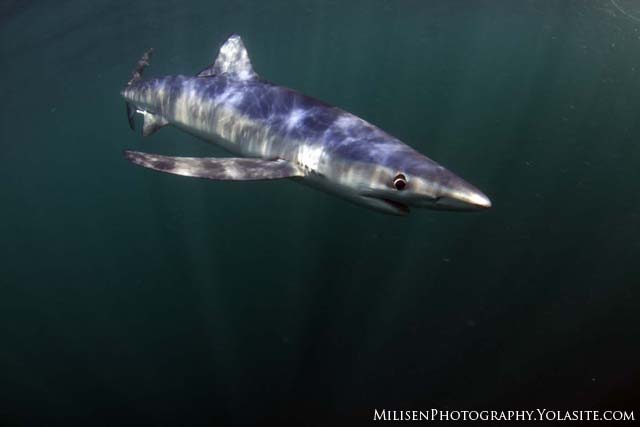
Wanna know what separates a blue shark from a Galapagos? Check out my Hawaiian Shark ID page.
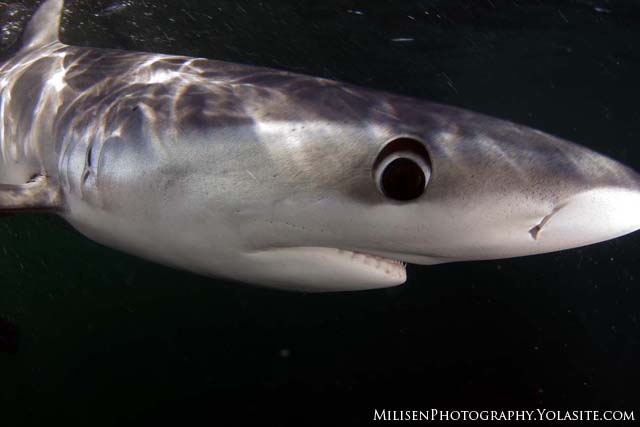
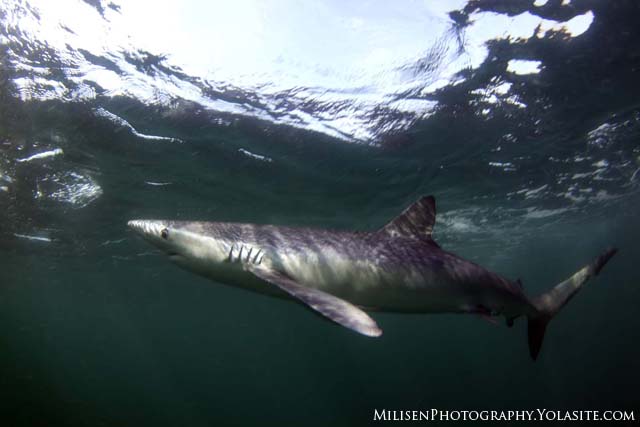
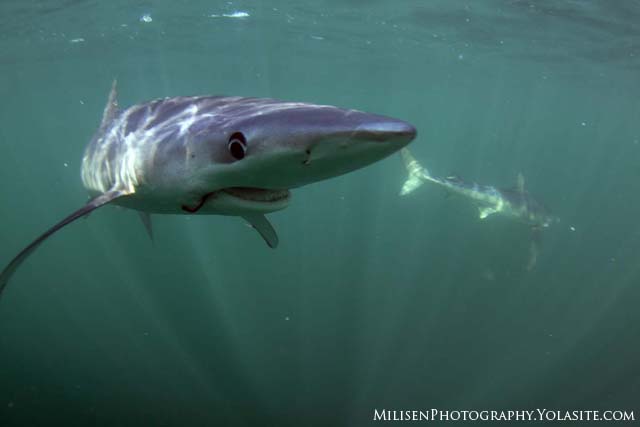
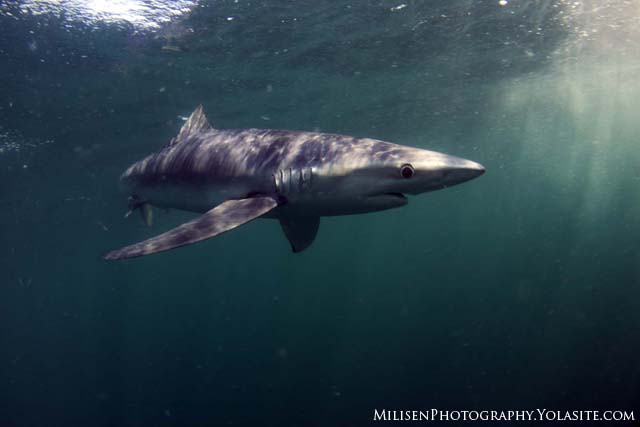
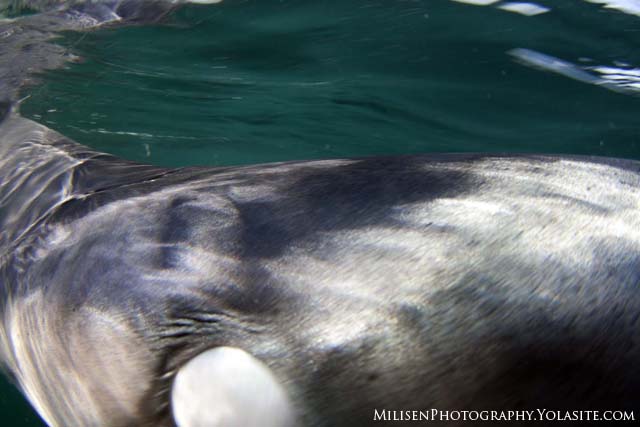
I'm still buffing the scratches out of my dome port.
